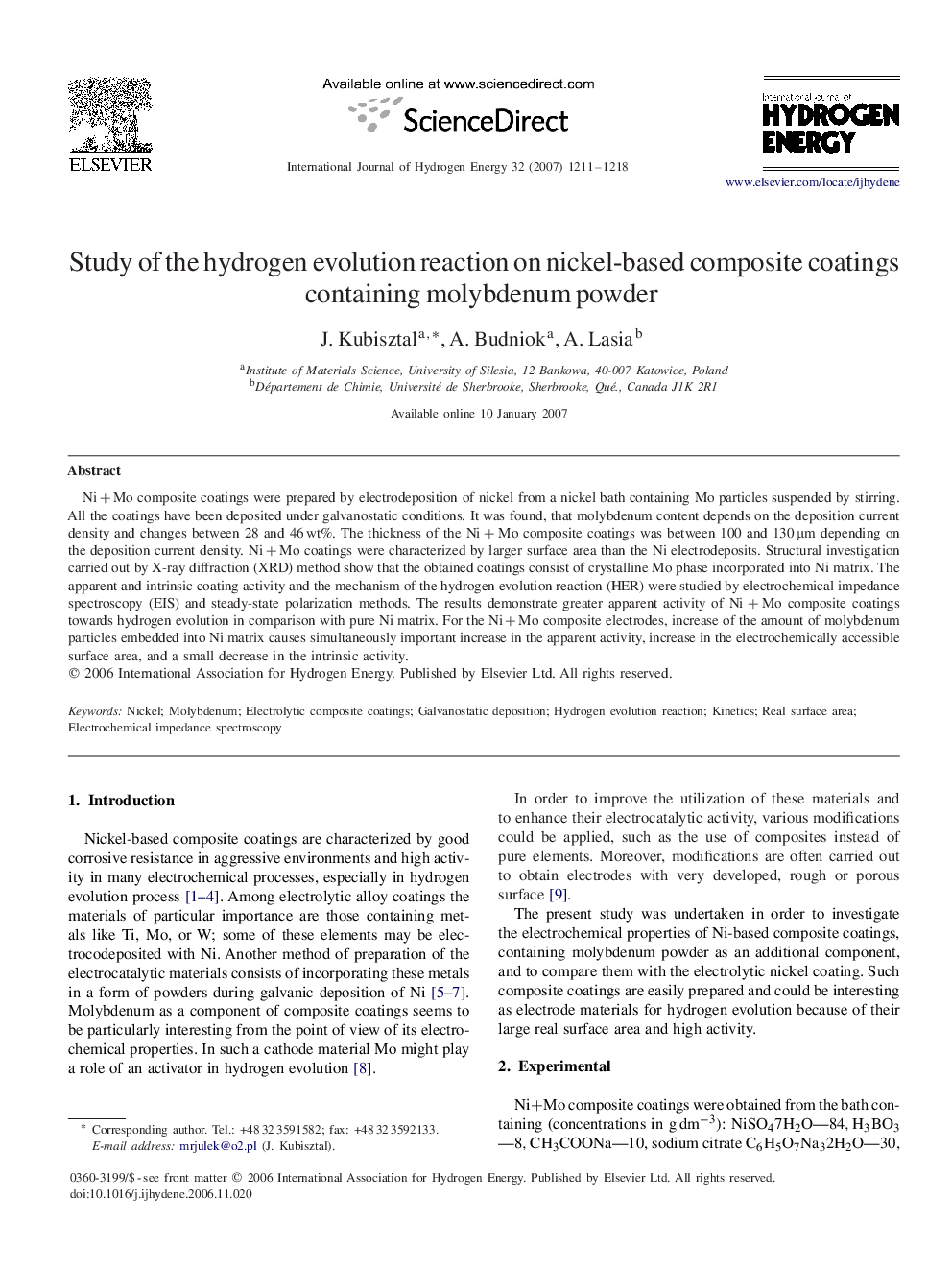| Article ID | Journal | Published Year | Pages | File Type |
|---|---|---|---|---|
| 1275155 | International Journal of Hydrogen Energy | 2007 | 8 Pages |
Ni+MoNi+Mo composite coatings were prepared by electrodeposition of nickel from a nickel bath containing Mo particles suspended by stirring. All the coatings have been deposited under galvanostatic conditions. It was found, that molybdenum content depends on the deposition current density and changes between 28 and 46 wt%. The thickness of the Ni+MoNi+Mo composite coatings was between 100 and 130μm depending on the deposition current density. Ni+MoNi+Mo coatings were characterized by larger surface area than the Ni electrodeposits. Structural investigation carried out by X-ray diffraction (XRD) method show that the obtained coatings consist of crystalline Mo phase incorporated into Ni matrix. The apparent and intrinsic coating activity and the mechanism of the hydrogen evolution reaction (HER) were studied by electrochemical impedance spectroscopy (EIS) and steady-state polarization methods. The results demonstrate greater apparent activity of Ni+MoNi+Mo composite coatings towards hydrogen evolution in comparison with pure Ni matrix. For the Ni+MoNi+Mo composite electrodes, increase of the amount of molybdenum particles embedded into Ni matrix causes simultaneously important increase in the apparent activity, increase in the electrochemically accessible surface area, and a small decrease in the intrinsic activity.
